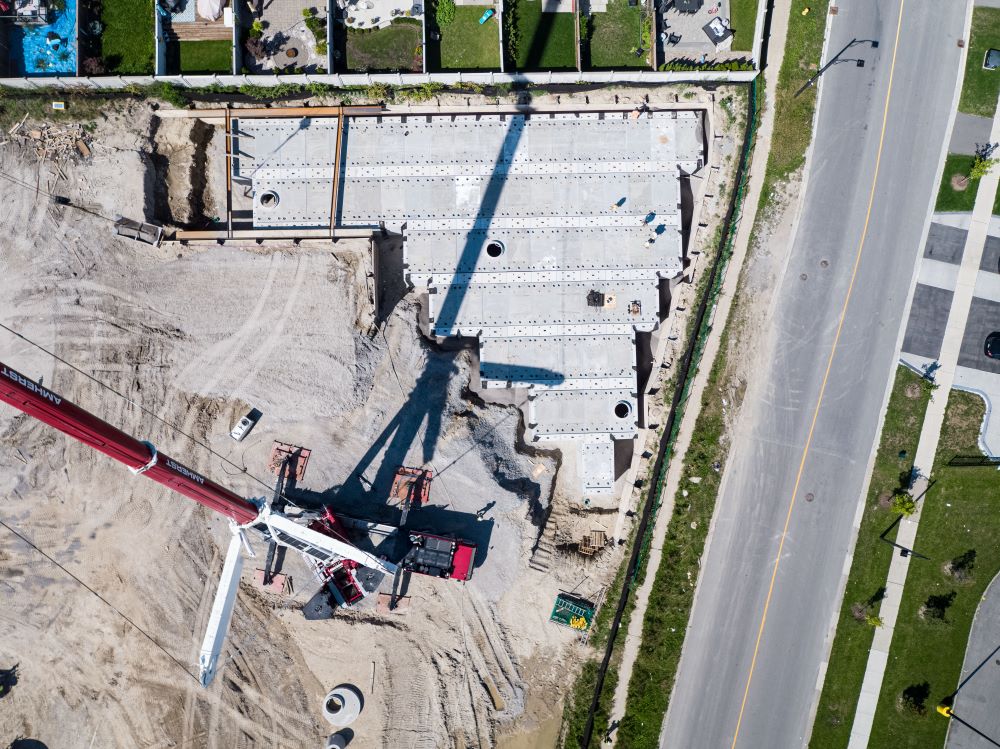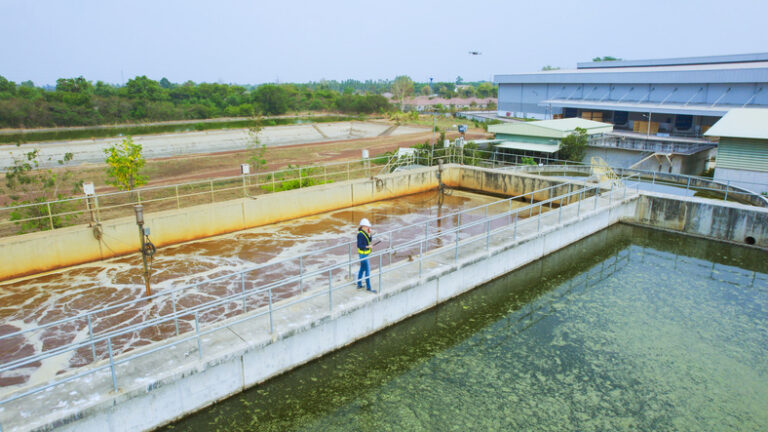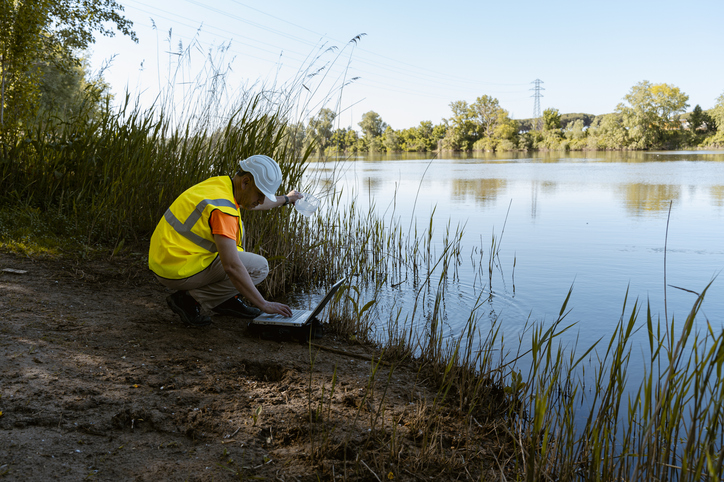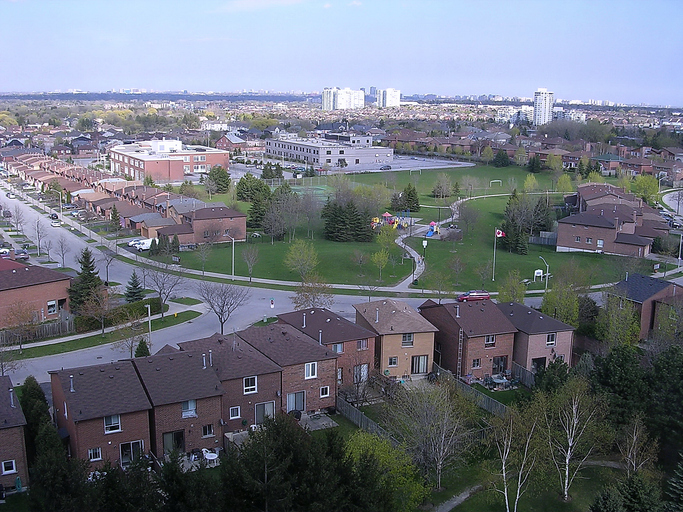The cost of land in Canada’s major cities and their surrounding areas is skyrocketing. New housing stock are going for astronomical prices and there is no concrete evidence to suggest that this trend will change. So how do we make more of our new residential footprints, especially with the need to factor in climate change and resiliency measures in these developments? How do we build greener communities while still making the most of the valuable existing land mass?
One solution that has emerged is the opportunity to bury our stormwater management capacity, removing the need for aboveground stormwater ponds and, in turn, freeing up additional space for desperately needed housing stock and recreational space.
The value of going underground
Shifting stormwater storage underground allows for the reuse of the surface area above it for parkland or other low-loading urban uses such as turfed playing fields and amphitheatres. These forms of land use work well in this setting, allowing the large surface area associated with the underground stormwater management
facility to double as parkland dedication, freeing up the space that would have been reserved for a pond, a normal factor in urban development that is viewed as a cost for developers. Normally, the pond area and a separate park area would be considered a requirement of a traditional development application but combining them allows for significant savings in land value.
Other items that are in underground detention’s favor are hydraulically related. Open-air stormwater management ponds have maximum depth requirements for public safety that constrain outlet system design. Underground systems are not accessible to the public, so water depths can be higher, reducing facility footprint for the same volume and adding flexibility in the design of outlet controls to dial-in performance for the sensitive receiving water systems.
Anther benefit of underground systems is the reduction of thermal load on receiving watercourses. Many Ontario watercourses are considered cold-water fisheries with aquatic life that is sensitive to contributions of warm water discharges from open-air stormwater management ponds that typically sit in direct sunlight most of the year. Underground stormwater management facilities typically have significant amounts of concrete in thermal equilibrium with the subsurface soil, so any water stored in the facility doesn’t warm up from sunlight and inflowing water can be cooled by the concrete as a heat sink. This results in less stress on the receiving streams.
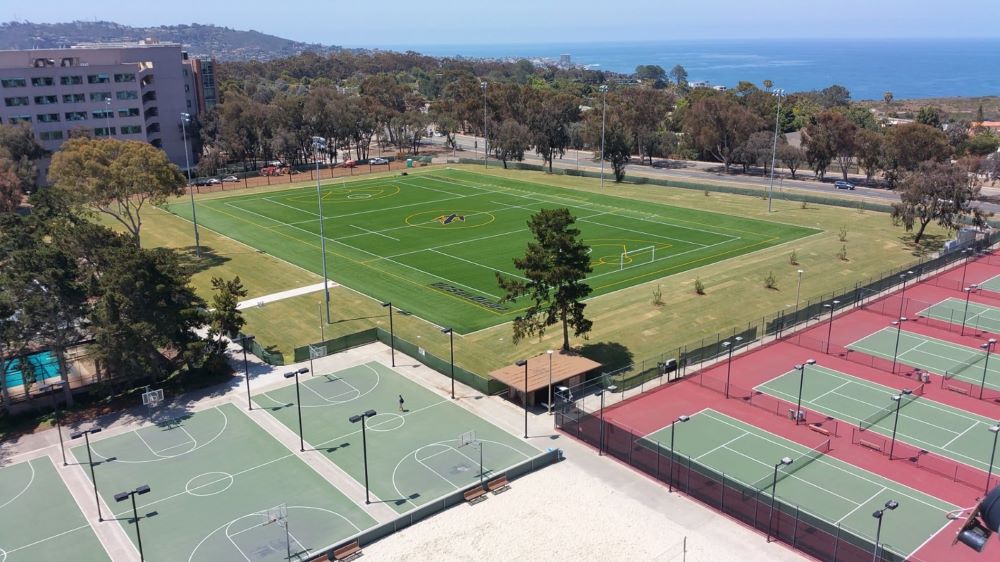
These tangible benefits make the investigation of underground stormwater capacity worthwhile when planning new residential neighbourhoods in high land value locations.
When properly designed, maintenance costs for underground detention systems are generally equivalent to or lower than above ground stormwater management ponds. With larger detention systems where water quality is addressed off-line to the underground detention storage via a treatment train-based approach, maintenance is relatively straightforward and consistent with the processes developed by the manufacturers of these systems. Any bioretention-based systems upstream of the storage system that are part of the treatment train approach are typically maintained by urban park staff (such as trash removal, vegetation control or minor grading, repair, etc.).
Proprietary systems, such as oil-grit separators or filter-based systems using cartridges or filter media, can often be maintained by third-party services as well and typically do not require confined space entry, except in rare conditions. Maintenance can be completed in a single day with little mess or evidence left behind. In contrast, maintenance of a surface stormwater management pond requires disturbance of the pond’s surface layers with excavation equipment such as excavators and/or dump trucks. The surface stormwater management ponds then require a period of time to re-establish disturbed vegetation before full treatment performance is restored.
As for water quality treatment, an underground-based system with a treatment train-based water quality approach, depending on site considerations, is likely better at removing fine particulates from the runoff stream via media filtration than a surface stormwater management pond. Meanwhile, surface-based wet ponds operate on a gravity settling principle where sediment drops out of solution by detention in a low-energy environment after a designated period of time. This performance can be compromised by sediment re-suspension from a number of factors including neglected maintenance, increased frequency of incident rainfall, and inadequate design due to above ground constraints on the pond’s geometry.
In contrast, underground systems with off-line water quality treatment systems are often manufactured to avoid sediment re-suspension with the use of bypass systems for heavy flows and hydraulic processes that allow removed sediment to accumulate in storage areas resistant to it. When combining gravity-based removal of larger sediments in a primary water quality treatment system (such as an OGS unit), and a filtration-based approach in a secondary treatment system in a treatment train configuration targeted at smaller fractions of sediments, an increase in sediment removal (and attached pollutants such as hydrocarbons or excess nutrients) is provided. Without question, there are definite advantages to the introduction of this type of underground stormwater collection system where the business case makes sense, as many of the previous challenges in doing so have been addressed through innovation and technology improvements.
Understanding the challenges
As important to understanding the benefits of underground stormwater collection is the appreciation of the challenges that such a system presents. However, these challenges can typically be met with fairly simple solutions, which is helping to make underground storage such a viable option when land values are high.
Underground water storage has the potential to lose dissolved oxygen via stagnation. This can lead to anoxic conditions in underground water stored for any appreciable period of time where water chemistry shifts to the production of noxious odours such as hydrogen sulfide (the “rotten egg” smell) and the growth of cyanobacteria.
The key to mitigating these impacts involve the regular changing of any standing volume of water stored in the facility so it does not experience stagnation or ensuring the storage volume of the underground facility fully empties regularly after precipitation events. Another mitigation approach involves ensuring stormwater is well-saturated with dissolved oxygen before it is stored underground for any appreciable period of time. The approach will vary with project size with smaller systems benefiting from more rapid turnover, while larger systems should be designed to fully empty between storm events.
Environmental impacts
As for environmental impacts, surface-based stormwater management ponds are not a natural feature and they are normally considered as necessary infrastructure by municipalities. While they resemble natural features and allow for natural, open-space-based experiences for pedestrians, their required functions are not typically compatible with the establishment of habitat-based improvements. Their open water nature allows for some facultative use of them by waterfowl, but are typically inconsistent with supporting natural flora and fauna, thus are rarely if ever configured for this function and as a result are not usually added to the inventory of natural heritage features or considered in urban planning processes.
Open-air wet ponds possess other social issues that impact the environment. One example is their use as a disposal destination for unwanted aquatic pets, such as goldfish. While it may seem to be a kindness to release these animals to the wild to fend for themselves, the effect of this action is to introduce an invasive species to aquatic systems where they aren’t present naturally. Goldfish in particular act as bottom feeders, stirring up sediment in receiving streams, which can impact habitats for sight-feeders such as the endangered Red Side Dace. In storm ponds, goldfish burrow into the sides of the ponds, eroding their edges and increasing the maintenance burden for municipalities. Substituting open air wet ponds with underground systems removes the temptation to dispose of these creatures in this fashion, and avoids the unanticipated, associated environmental impacts.
Large underground detention systems are developed and configured to resemble vault-style systems, with regular repeating structural units providing a large unit storage volume. When combined together they can create massive amounts of storage suitable for flow control of large upstream development areas. They are always structurally configured to support the weight of soil, park land, or whatever is planned above them via reinforced concrete columns, culvert rows, or other approaches, often with a healthy factor of safety. For single site applications, typically smaller than two hectares, similar performance may be achieved via smaller systems that utilize structural plastic (similar to milk crates or arch based half-pipes) that provide a lower relative water storage volume and material cost. However, for larger areas that would historically require a stormwater management pond (drainage areas larger than five-to-10 hectares), concrete based systems are typically used. The economics of land value in a metropolitan setting is shifting to allow this approach to be economically viable compared to previous decades when it would have been considered prohibitively expensive.
Steven van Haren, P.Eng.is a manager of Land Development / Water Resources for WSP Canada.
Featured photo: Shifting stormwater storage underground allows for the reuse of the surface area above it for parkland or other low-loading urban uses such as turfed playing fields and amphitheatres. | DECAST

